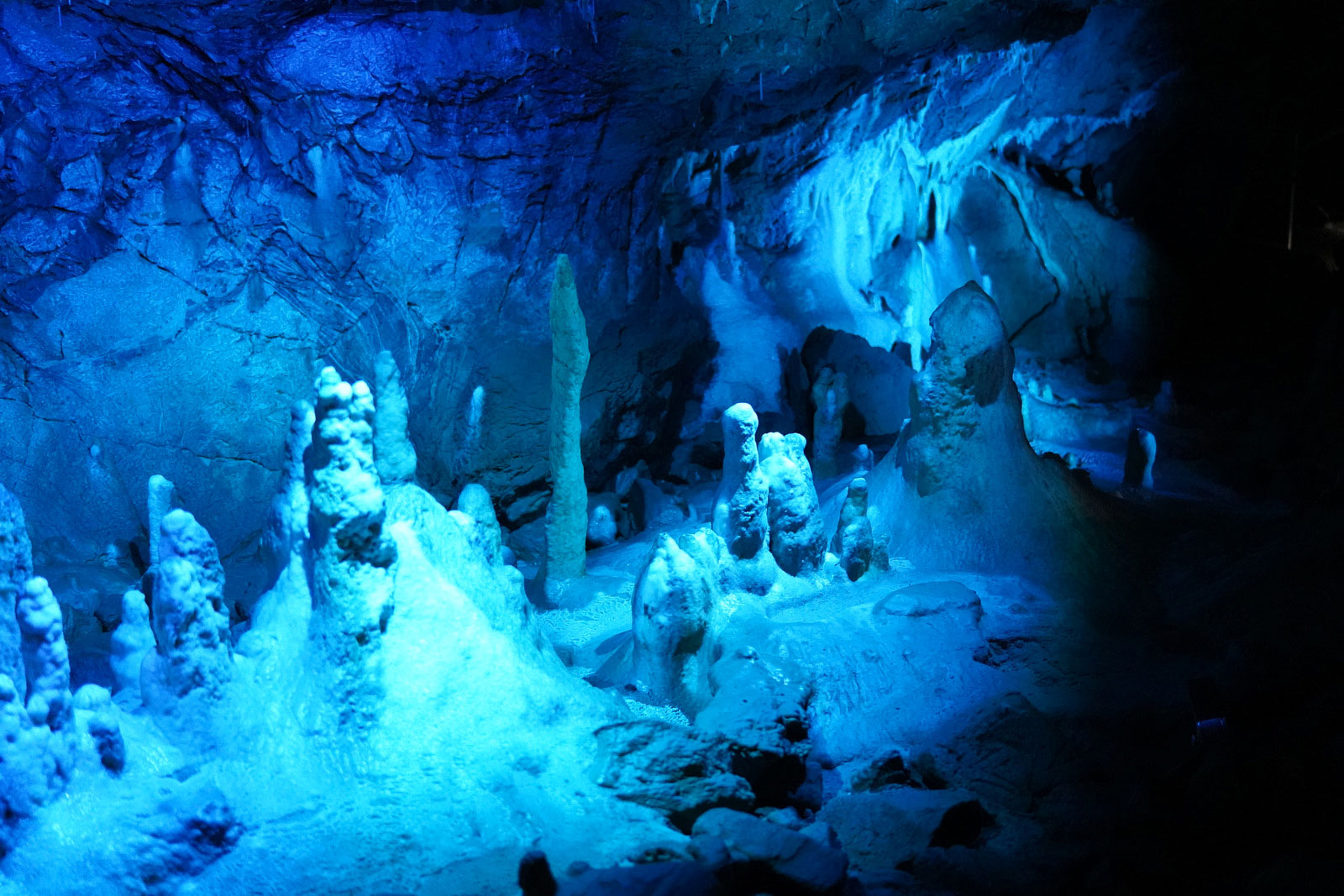
Awakening the Underworld
Enhancing the show cave experience
Article published by Illuminating Engineering Society
85 Broad Street, Floor 17, New York, NY 10004
All rights by Illuminating Engineering Society
Awakening the Underworld
Enhancing the show cave experience
The mythology of numerous civilizations suggests caves are gateways to the underworld. The Norse described Nidavellir (also known as Svartalfheim) as a labyrinth of mines and forges that was the home of the Dark Elves, while Greeks believed that beneath the Cave of Hades flowed the River Styx, where Charon the ferryman would usher souls into the realm of the dead.
It’s not quite traversing worlds of mythical creatures,but our company Cave Lighting was born out of a passion for real-life wild-cave exploration. From that love came the desire to focus on show caves—those open to the public for private tours — most of which we found to be poorly lit. Through the lens of cave enthusiasts, our goal was to make show caves more accessible to the general public using new technologies.
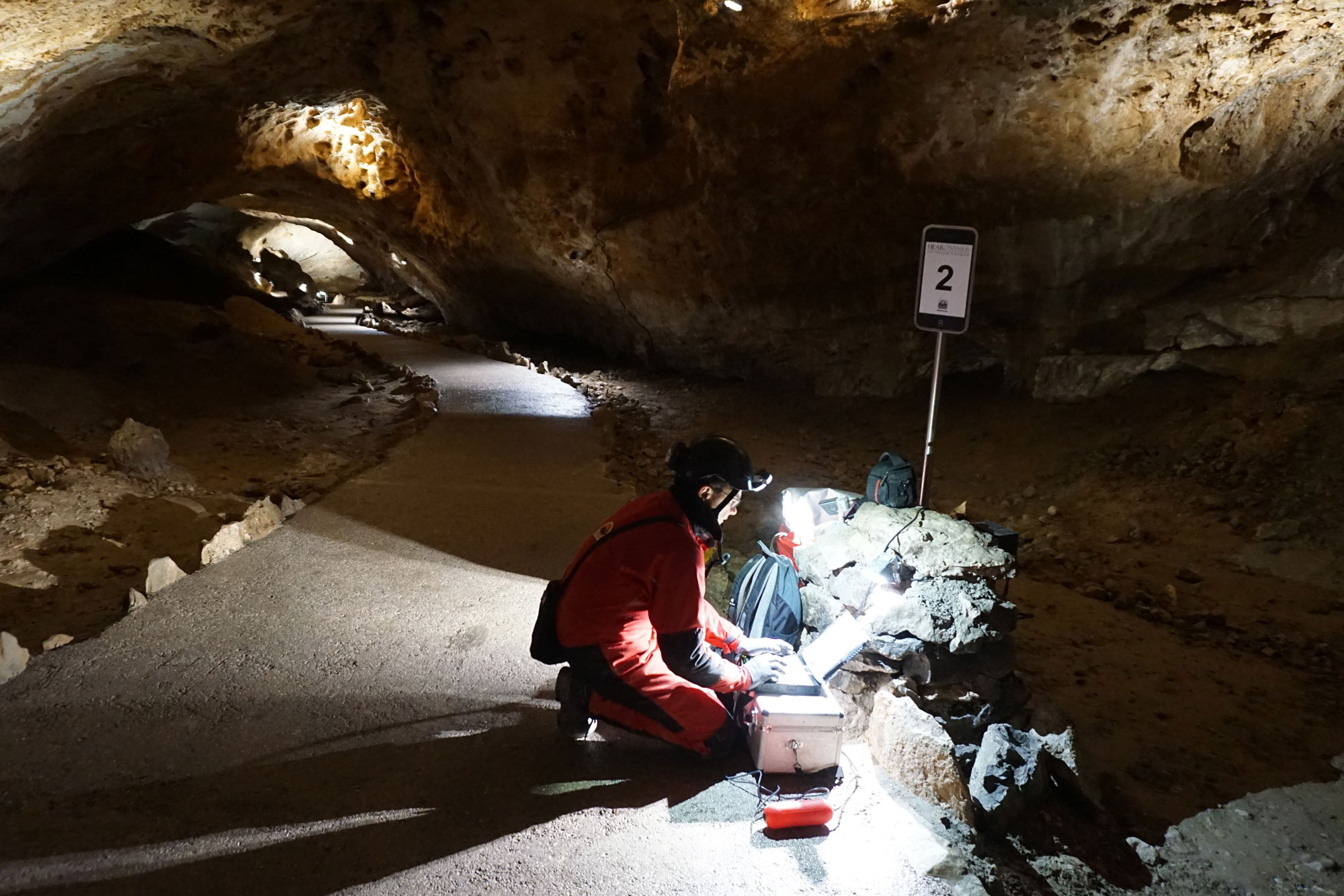
When we began, we had no work experience with show caves, guided tours, electrical systems and lighting design—and we quickly acknowledged that we needed a lighting system suitable for caves. Since nothing was available on the market at that time, in 2008, we developed the first version of our cave lighting system, which was created explicitly for use in the harsh environments in show caves and show mines. During that process, we realized that the way cavers see things is very different from electricians, planners, architects, lighting designers and scenographers. The biggest challenge was that the electrical companies had little expertise with the underworld. While their systems provided illumination, it was often dreadful — offering poor aesthetics and destroying cave environments.
From 2005 to 2008, most show caves were illuminated with only warm white light (3000K). Since this color temperature cannot reproduce accurate colors of underground objects, we relied exclusively on cool white light (6000K). This color temperature proved to be suitable for highlighting the natural colors and white speleothems (mineral deposits formed from groundwater within underground caverns). Later, we experimented with different color temperatures, using variants ranging from cool white to amber and different beam angles from 10 deg to 120 deg.
The technical solutions required for illuminating caves are relatively straightforward. In contrast, the lighting design and scenography of each cave visit are unique and differ from project to project. While we develop and produce our own lighting for use in show caves, it is relatively easy to find good luminaires on the market with an IP65 rating for outdoor use or IP68 for underwater use. However, these luminaires are developed and intended for a wide range of applications and not for an environment with 95% to 100% humidity. It is best to favor robust housing that can survive in a harsh environment for a relatively long time. The first systems we built have been in use for 16 years, and the luminaires are still in good shape, with a few minor exceptions.
Cave lighting combines lighting control with industrial automation and relies on a combination of centralized and decentralized systems. The lighting control system is also developed in-house and includes lighting controllers, multimedia controllers and wireless controllers. Standard solutions from various manufacturers are used for automation, such as smart power supplies, UPS, batteries and surge-protection devices from Phoenix Contact GmbH & Co. KG and PLC and Power over Ethernet switches, as well as other automation components from WAGO GmbH & Co KG.

The control of the lighting system depends on the concept of the system (i.e., the management) and, to some extent, the lighting design. In many projects, a fiber-optic network is set up and PLC automation of the electrical system is integrated, which is then combined with the lighting control system. The lighting control system contains static and dynamic elements, and different protocols are used, such as PWM, DMX 512 or analog switching.
Cave illumination is not a one-person or singlecompany endeavor. The job relies on cooperation and synergy with specialists from different fields including electrical planners, lighting designers, architects and scenographers. Ultimately, lighting in caves only really works if the safety of show cave visitors is assured. Therefore, lighting is divided into two parts: safety (or trail) lighting and accent lighting. Safety lighting is responsible for illuminating the guide path and contains redundant elements to ensure reliable lighting. Depending on the country and requirements, the path lighting can be between 1 lux and 5 lux, which effectively illuminates the area for visitors.
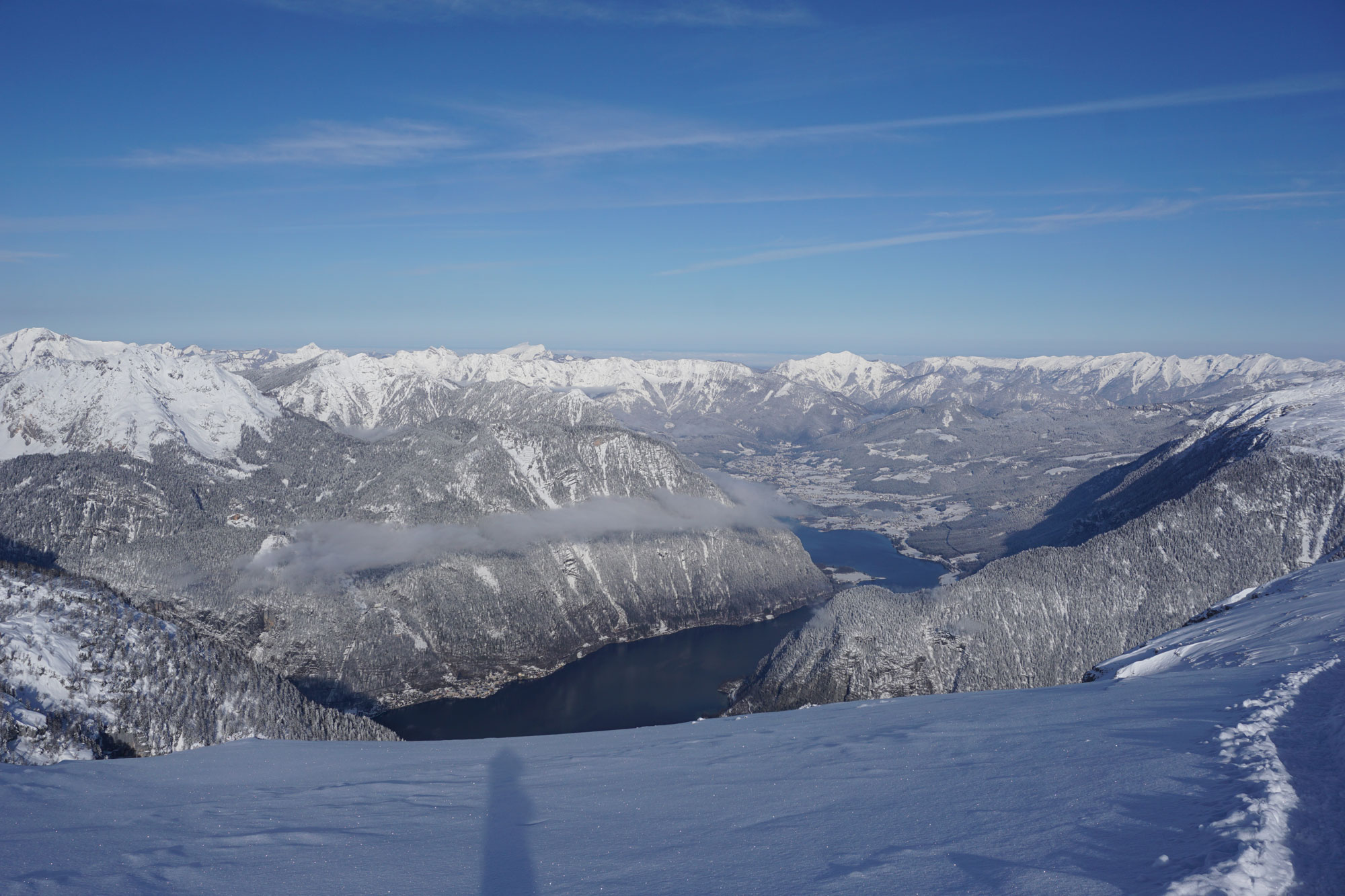
Once safety has been ensured, various accent lighting options can be implemented. Lighting design in show caves or other underground tourist attractions are applied in very different ways. For example, designers may develop a holistic concept with a story and use the lighting to tell that story. Others may wish to present the cave as a natural wonder and ensure that its beauty is accessible. In any case, in underground projects, it is very important to avoid over-illumination and using intense colors, which often overwhelm visitors. A balance and equilibrium of lighting are essential; we work predominantly with white light and prefer not to exceed a maximum illuminance of 200 lux on cave surfaces.
There isn’t a one-size-fits-all solution for cave lighting—each location offers unique challenges that often require creative solutions. Let’s take a look at two of our projects: the Dachstein Giant Ice Cave in Obertraun, Austria, and the Haut-Martelange Slate Museum in Luxembourg.
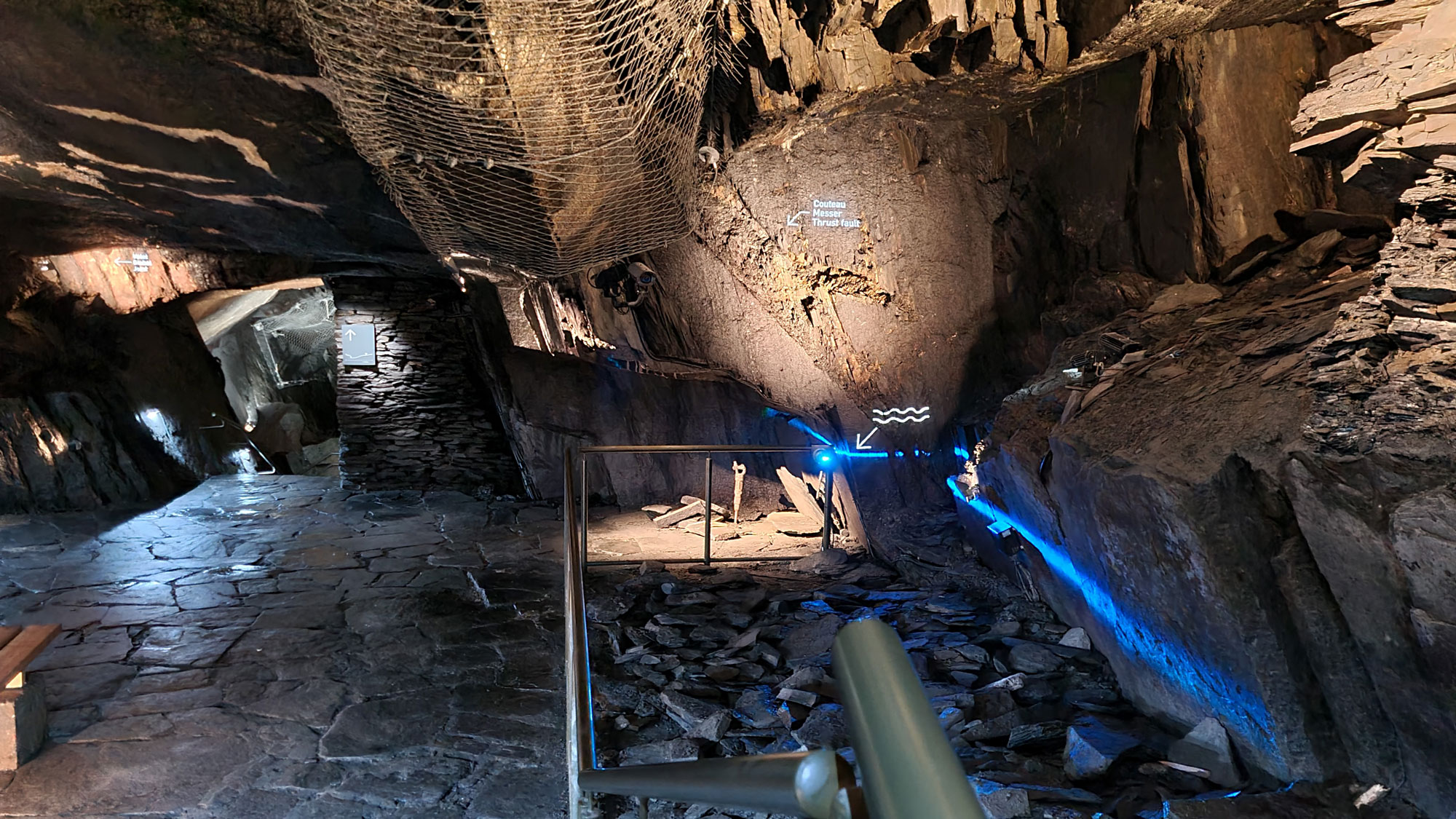
One of our most extreme projects is the restaging of the Giant Ice Cave on the Dachstein glacier, located at the borders of Salzburg, Upper Austria and Styria. This site is one of the few highalpine show caves in the world. The entrance sits at an altitude of 1,421 meters (~4,660 ft) above sea level. The length of the show cave section is approximately 800 meters (~2,625 ft), with a height difference of approximately 70 meters (~230 ft) between the entrance and the exit. Giant Ice Cave is divided into two parts: a lower section with ambient temperatures of up to 3 deg Celsius and an upper section with ice formations and maximum ambient temperatures of +/- 0 deg Celsius.
The company Pronatour GmbH from Vienna, Austria, was primarily responsible for the project and developed a concept that would use amusement effects to transform this show cave into a type of “underworld Disneyland.” Taking the lead on the lighting design and electrical planning, we saw things differently; after numerous discussions and tests on site, Pronatour agreed on a combination of natural and authentic lighting with several multimedia islands that included light and music shows, colored lighting and dynamic content.
The third zone of the cave features a PLCcontrolled automation network and is divided into nine guide zones. The first four zones are ice-free and predominantly illuminated with white lighting between 6000K and 4500K. The special features of this part of the show cave include two fully automated robot bears that are centrally controlled via PLC.
Zones five to nine include the actual ice cave, which possesses thick layers of ice, ice figures and special shapes including various forms like icicles and ice surfaces, with the largest formation being the iceberg. A combination of cool white and RGBW lighting was used for the staging in these areas. In various areas of the ice cave, five light and music shows were constructed in collaboration with scenographer Jan Ptacin, thematically supporting the tour and the story being told. For example, in Dripstones Hall (zone 2), the show supported the explanation of the speleogenesis of the cave. In Parsival Hall (zone 6), the show includes music from German composer Richard Wagner’s “Parsifal.”
For the pathway lighting, we used 5000K CL-LMT luminaires (30 lumens, 1 watt). For the accent lighting, we employed 4500K to 6200K CL-LSQ2 luminaires (250 lumens, 3.5 watts) and 4500K to 6200K CL-LQP2 luminaires (1,200 lumens, 12 watts). RGBW light and music shows were equipped with DMX-controlled CL-EQP luminaires, which were originally designed for the entertainment sector.

The environment is what made this project particularly unique. We began installation in February 2018 when the temperatures were -25 deg Celsius outside and -12 deg Celsius in the cave entrance. We had to work both on and in the ice, not only designing the lighting (i.e., finding locations for the lamps and creating lighting scenes) but also drilling holes, laying cables and electrical connections and programming them.
Another challenge was the exposed location of the cave and the very poor protection of the electrical network. We quickly realized that the show cave was not electrically protected against overvoltage. As a result, a special lightning protection system with approximately 50 customized lightning protection devices (SPD) was developed and installed.
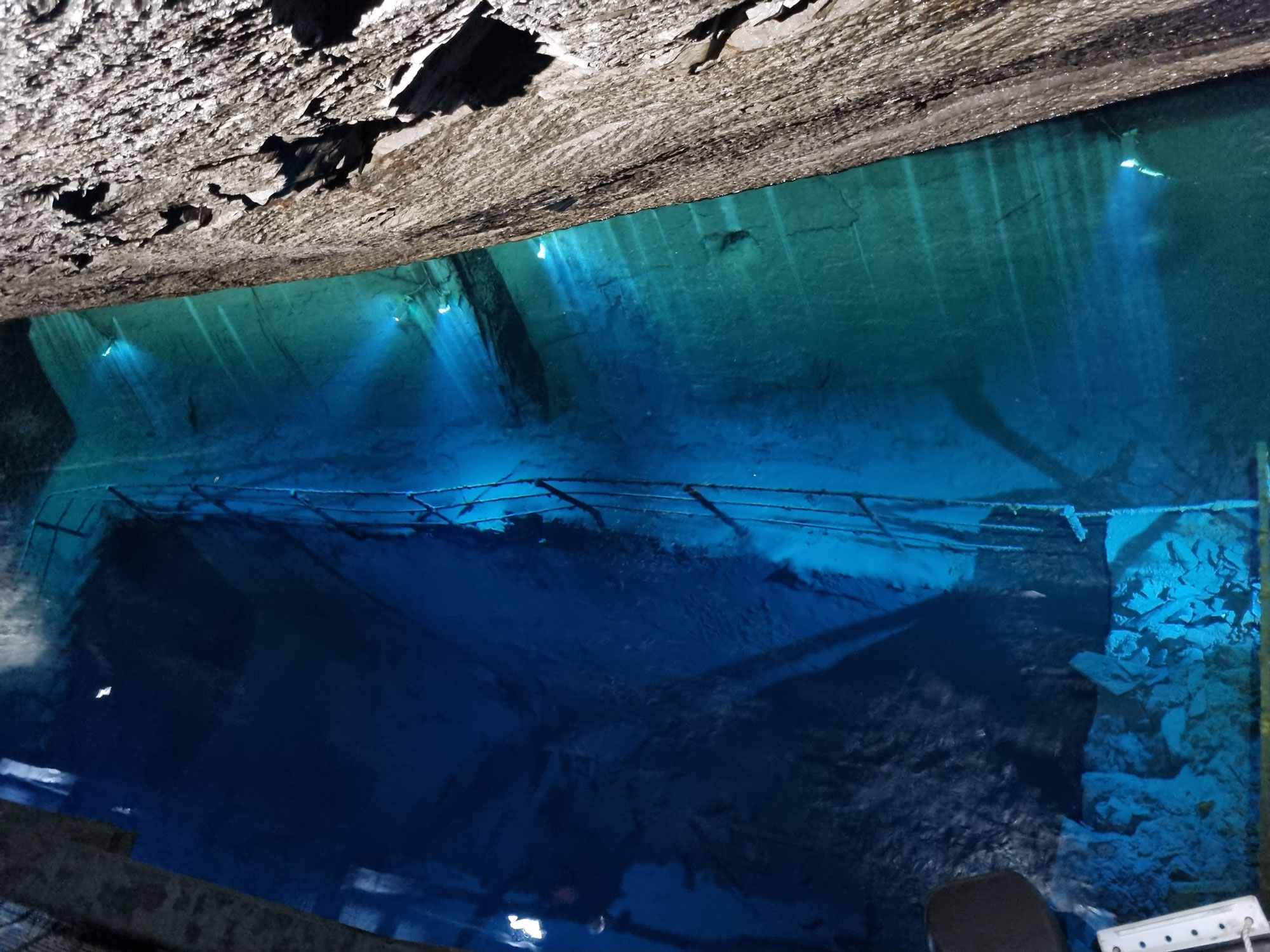
Dealing with frozen features is only one type of challenging cave illumination environment. The Haut-Martelange slate mine at the Slate Museum complex in Luxembourg offered entirely different obstacles to overcome. The museum and slate quarry are located on an 8-hectare open-air site with 26 renovated craft workshops. The mine possesses a complex topology and is approximately 600 meters (~1,969 ft) long and extends over five different levels. The difference in height between the entrance and the deepest level of visitation is nearly 80 meters (~263 ft). At the very bottom of the area set up for visitors, you can experience two large “lakes,” which are actually flooded shafts, some of which reach a depth of 100 meters (~328 ft). At the start of the project, the entire mine was underwater, and it took two years to pump the water out. In 2021, the construction project began, but it was hampered by flooding and landslides. By November 2022, the mine began operation and the museum officially opened.
The lighting system installed in the mine was extensive and included a PLC-controlled automation network with six sub-distributors and power supply for devices with 230 VAC, 48 VDC, 36 VDC and 24 VDC. For the trail lighting, PWM-controlled, 6000K CL-LMT luminaires were employed along with DMX-controlled, 2700K PIXELDOME lights (from GVA Lighting) for path lighting. Accent lighting was realized with PWM- and DMX-controlled CL-LSQ and CL-LQP series fixtures with color temperatures between 3000K and 6200K. Some of the mine’s multimedia light shows were created using CL-EQP luminaires, which are color-calibrated and controlled via DMX. Five Sony projectors, packed in special housings, were installed along with 12 IP65-rated, 5500K, ROSCO Image Spots.
The installation and programming of the project was a real challenge, as rope techniques were required and high bulkheads climbed to install, connect and pre-program the luminaires. Specialists often had to work 20 to 30 meters (~66 to 98 ft) above the ground with hammer drills and Toughbooks in hand. Another obstacle was the underwater installation of the lighting. Initially, the plan was to dive and install the lighting underwater. However, we determined that the water could be pumped out of the shafts and the installation completed using an inflatable boat.
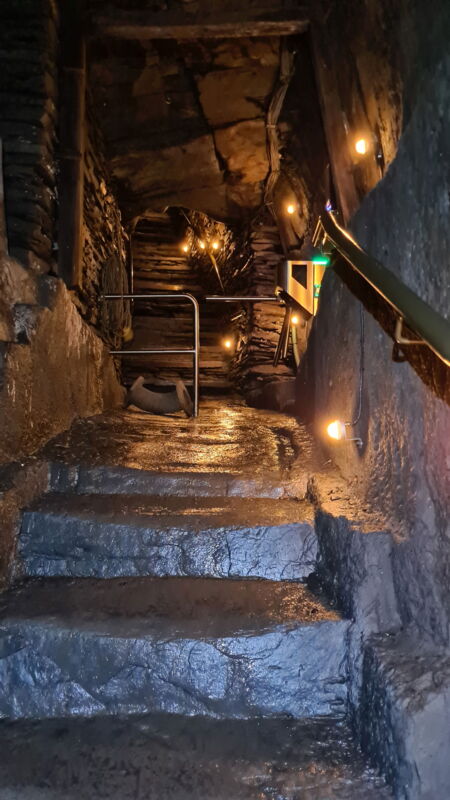
Currently, we are on our 111th project and, looking back, we see a path that has sometimes been rocky (no pun intended), but it has brought both success and customer satisfaction. Sixteen years ago, there existed only simple systems where light was switched on and off. Today, we can plan and create very complex systems with numerous elements that support intelligent guidance and are conceptually diverse. While we have, thus far, implemented many video projections in projects, full video mapping underground is a project we look forward to undertaking, possibly this year in France. Just like the lighting designers in the above-ground world, cave illuminators continue to push the envelope to enhance the sense of wonder to all those who descend beneath Earth’s surface.
THE AUTHORS | Alexander Chrapko is one of the founders of Cave Lighting CL GmbH & Co KG. He has organized and managed cave lighting projects in more than 20 countries.
Vladimir Vashkevich is a product and project manager and a technical manager in the pre-planning and detailing of electronic installations, maintenance of technical documentation and after-sales services at Cave Lighting CL GmbH & Co KG.
















